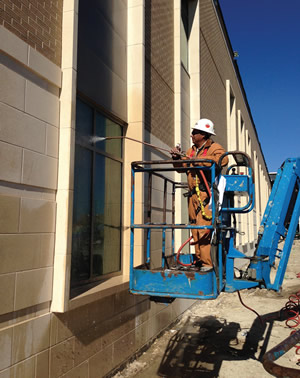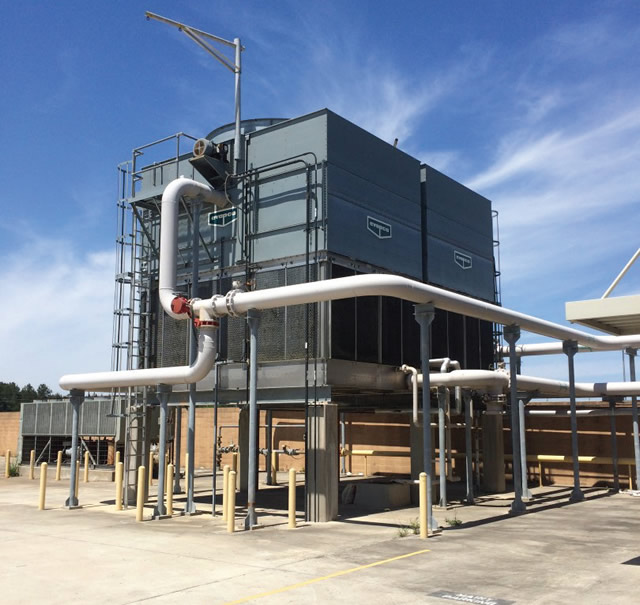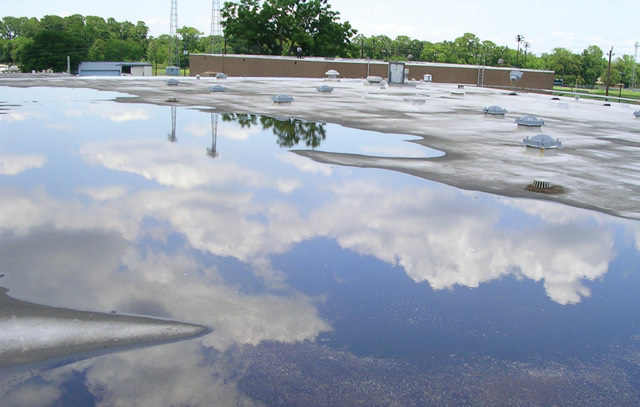From Cradle to Grave: The Cost of a Building
- By Harold Stephens, Whitney Cabaza
- 03/01/20
At a certain point in the life span of a building,
owners will inevitably be faced with deciding whether to repair critical
infrastructure systems or replace the building in its entirety.
This brings into question — when a system shows signs of failing,
what is the most cost-effective course of action an owner should
take? Does the owner replace
the system or close the facility?

Critical infrastructure
systems include the building’s
mechanical, electrical,
plumbing and envelope systems.
These systems are expensive
and critical to not
only the operational comfort
of an enclosed space, but for
optimal building performance.
Both local and federal
codes require building
owners to construct buildings
per regulations specific
to the geographical area. It is no surprise educational spaces
can directly impact student success and achievement; therefore,
owners are highly motivated to seek maximum efficiency when
selecting a mechanical system. New plumbing systems now include
sustainable design and the preferred new electrical systems
are inclusive of building automation and controls. The building
envelope and roof systems are pertinent to selecting the most
cost effective and sustainable materials to keep the outside rain,
wind, snow and heat from penetrating the building membrane
while designing a welcoming exterior entrance. However, considering
approximately a quarter of a school district’s buildings
are new construction and the remaining 75 percent are existing
facilities, owners must effectively and efficiently track these critical
infrastructural systems’ lifecycles.
Building owners are encouraged to track system lifecycles by
simply establishing a long-term, sustainable and holistic building
asset management program. Building asset management is
a multi-disciplinary approach to the long-term stewardship and
management of building systems to maximize their lifecycle
value and benefit to the owner, occupants and community. An
owner’s asset management program will provide detailed insight
to associated system costs. "Keep up" costs include annual maintenance,
critical component renewal and replacement costs; and "get
ahead" costs include costs associated with upgrades and retrofits
improving the building design, functionality and efficiency. Once
the "keep up" costs and "get ahead" costs become more than the
replacement value of the building itself, an owner needs to make
the decision to either continue repairing or demolish and rebuild.

A building owner determines the district or university’s "get
ahead" costs by performing capacity studies and monitoring community
growth. These costs are imperative for owners to monitor
since they can be extremely high and require public funding through
bond propositions. An owner determines the "keep up" costs through
their building asset management program by conducting condition
assessments for each facility. Owner personnel, consultants, engineers
and representatives evaluate each building’s infrastructural systems
per discipline. The condition assessment identifies critical building
components in need of replacement or repair, as well as record any
preventative maintenance or items currently under warranty.
All major critical infrastructural systems are documented and
recorded as such: description of replacement or repair, current replacement
or repair priority, estimated year of replacement or repair,
and replacement or repair cost associated. Replacement or
repair priority can be on a 1 – 4 life expectancy scale with Priority
1 having 1 – 3 years of life expectancy remaining, Priority 2 is
3 – 5 years, Priority 3 is 5 – 10 years and Priority 4 is more than
10 years. Prioritizing these costs provides the building owner and
maintenance personnel easy to digest data for what needs to be corrected
now, versus what can wait. The owner can also decide to
add a Priority M for any items which can be covered by the facility
maintenance personnel. The replacement or repair costs associated
to each building assessment is then incorporated into a Facility
Condition Index (FCI).
FACILITY CONDITION INDEX - EXAMPLE
The Facility Condition Index (FCI) is used throughout the facility condition assessment industry as a general indicator of a
buildings health. The FCI is calculated by dividing the Facility Condition Repair Cost by the Replacement Value. As a
general rule, an FCI of 10% or less is considered Excellent, 11%-30% is Very Good, 31%-45% is Good, 46%-59% is
Average and 60% or more is considered Poor.
|
| |
PRIORITY TOTAL |
LIFE EXPECTANCY |
|
| Priority 1 Total |
$8,566,800.00 |
100.00% |
$8,566,800.00 |
| Priority 2 Total |
$10,857,193.60 |
100.00% |
$10,857,193.60 |
| Priority 3 Total |
$4,213,437.60 |
75.00% |
$3,160,078.20 |
| Priority 4 Total |
$416,400.00 |
50.00% |
$208,200.00 |
| FACILITY CONDITION REPAIR COST (SUM OF (PRIORITY TOTAL x LIFE EXPECTANCY)): |
$22,792,271.80 |
| FACILITY REPLACEMENT VALUE (SQ. FT X REPLACEMENT COST + SOFT COSTS): |
$36,290,582.00 |
| FACILITY CONDITION INDEX |
63% |
Each building receives an FCI value which is a snapshot of
the building’s health. An FCI is a comparative industry indicator
used to calculate the relative physical condition of the building
and expressed as a ratio of the cost of remedying existing deficiencies
to the current replacement value. As a rule of thumb, an FCI
of 10 percent or less is considered "Excellent" current building
condition. An FCI of 60 percent or more is considered "Poor" current
building condition and replacing the building in its entirety
may be the best valued option for the building owner. The FCI is
a convenient tool for building owners to utilize to their advantage
when funding is limited.
Beginning to devise an asset management program for all
critical infrastructures is a massive endeavor and requires consultants
from multiple disciplines.
So, it’s no surprise this may seem
overwhelming for any building
owner, especially when responsible
for several publicly funded buildings.
It is our professional recommendation,
as a Building Envelope
Asset Manager Professional, to start
from the outside of the building
and work inward. First, an owner’s
maintenance and operations department
should start with developing
a building envelope asset management program. Consult a
building envelope consultant for additional assistance and the
consultant will perform a condition assessment including verification
of all roof and envelope penetrations, current state of
the roof systems, window and door sealant quality, as well as
air and vapor barrier integrity. If your consultant is part of a
multi-disciplinary architectural and engineering firm, then it
may be beneficial to include a MEP consultant when examining
the roof. Since mechanical units and plumbing penetrations are
located on most roofs, fill two needs with one deed, right? Once
the owner’s envelope consultant establishes the current condition,
the documentation is produced and given to the owner to
integrate into their current maintenance database or will be the
foundation for the owner’s asset management program. By beginning
with the building envelope, then moving to other critical
infrastructures, it is a great way to begin your asset management
program and aid with breaking out the huge endeavor
into manageable tasks.

From the cradle of your building throughout its lifetime,
every building owner is encouraged to maintain an asset management
program. By staying vigilant and proactive with your
building’s health, owners can stay ahead of costly repairs and
replacements. However, once these costs outweigh the replacement
cost of the building, owners are faced with a tough decision
regarding the fate of the building.
An owner’s asset management
program should act as a crystal ball
to your building’s future, and if
managed correctly, your building
will live a long and healthy life.
This article originally appeared in the March/April 2020 issue of Spaces4Learning.